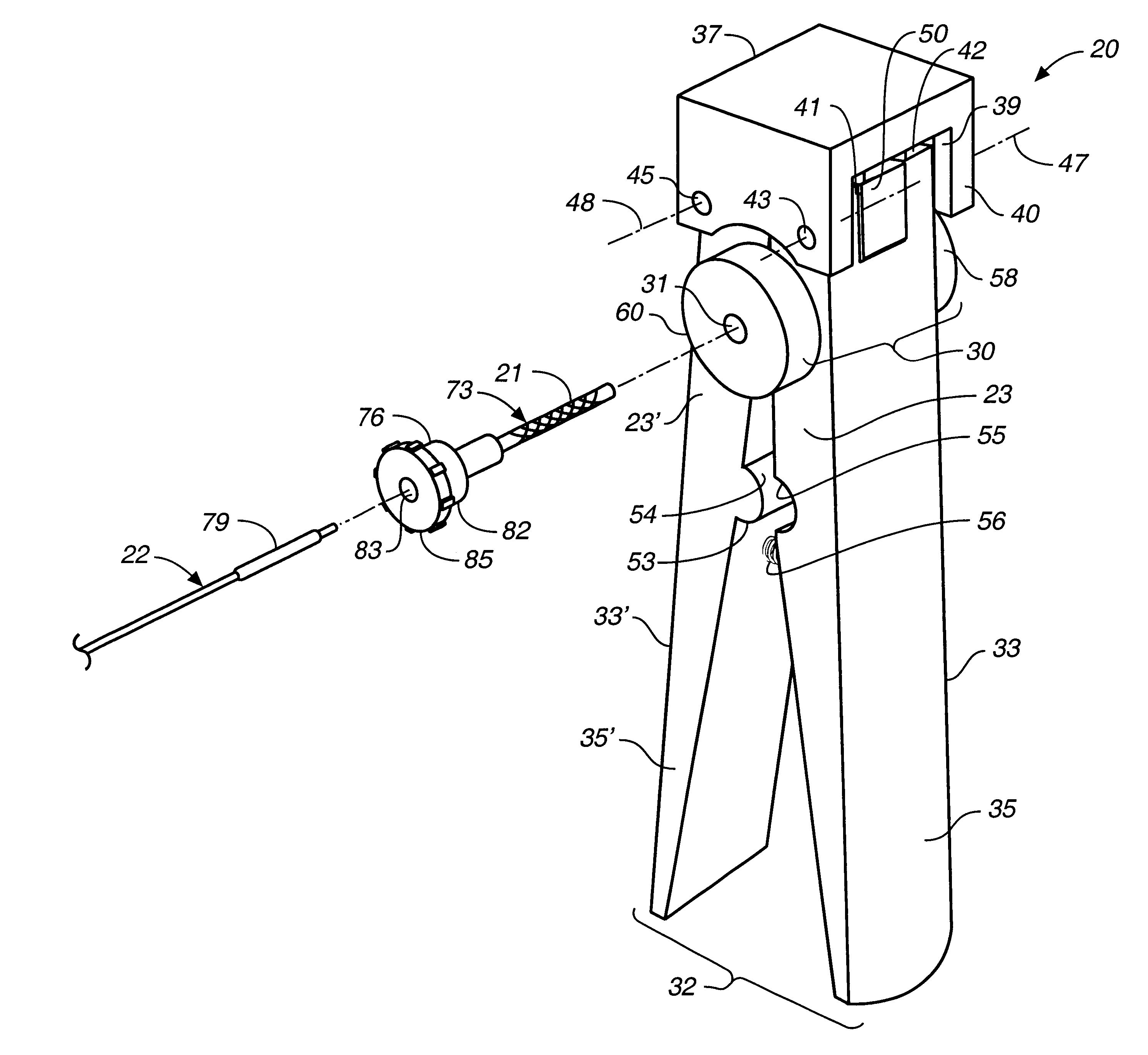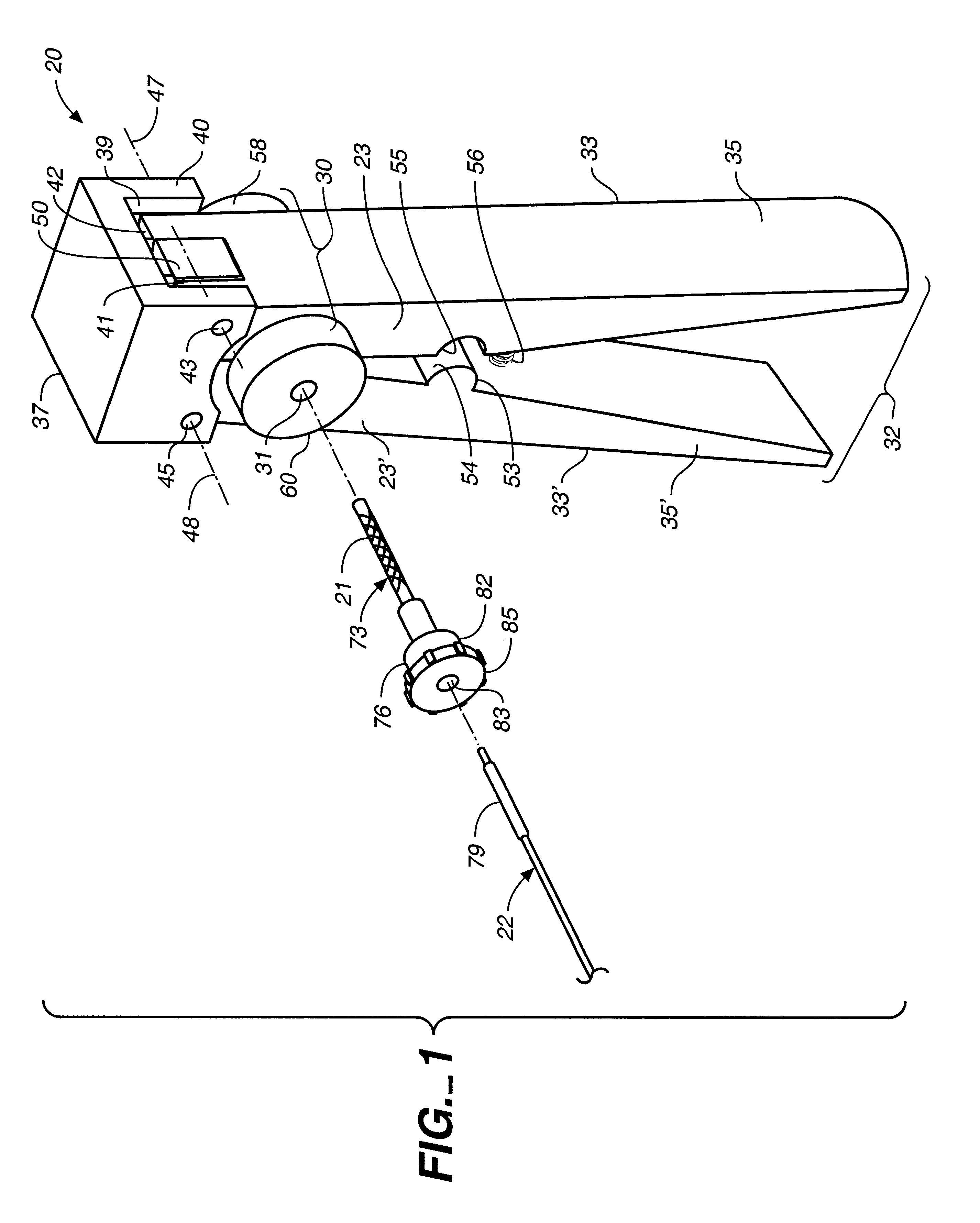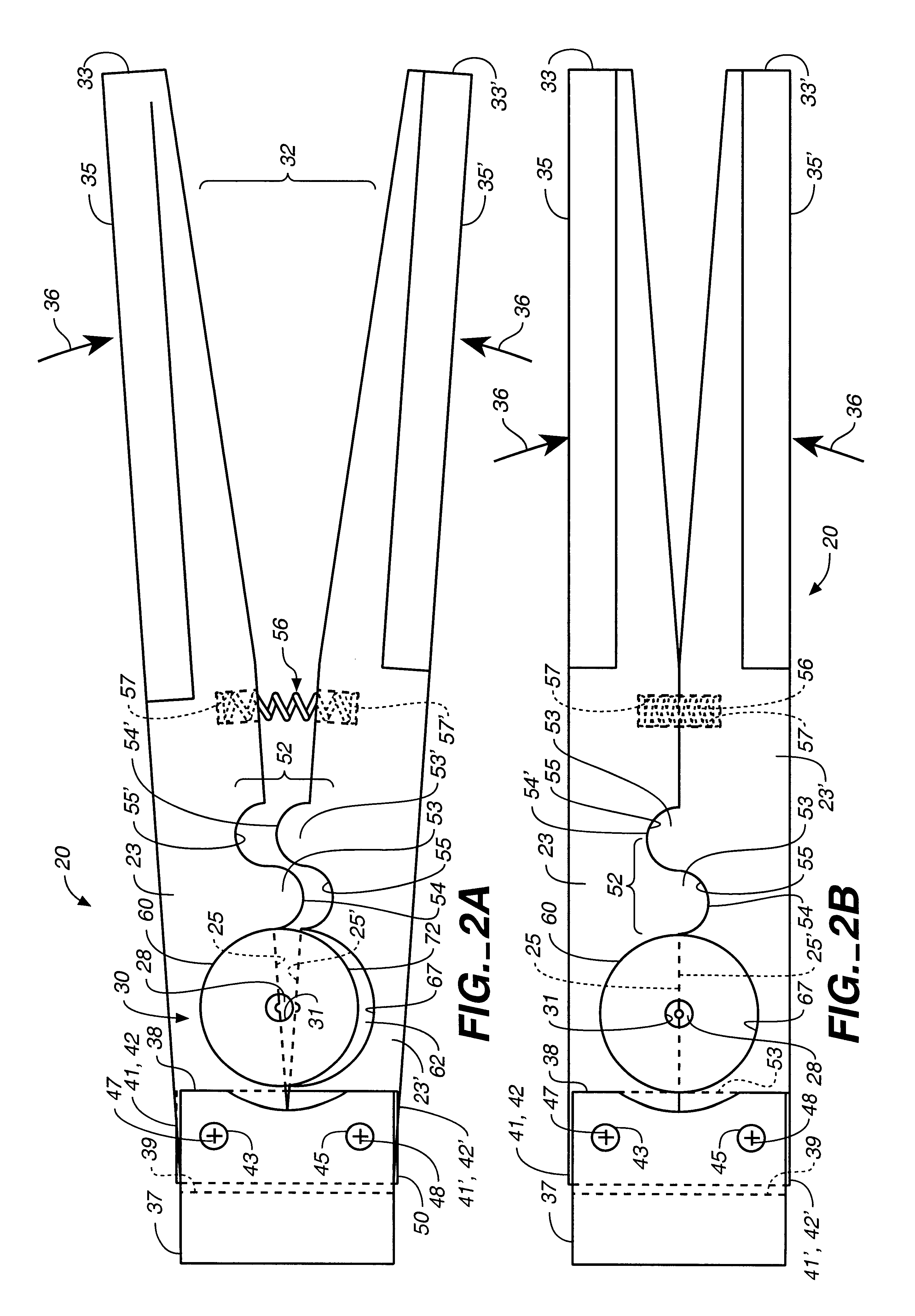Stent crimper apparatus with radiation shied
a crimper and stent technology, applied in the field of stent crimper apparatus with radiation shied, can solve the problems of balloon and/or stent damage, balloon and/or stent loss, and may not perform the other way as desired,
- Summary
- Abstract
- Description
- Claims
- Application Information
AI Technical Summary
Benefits of technology
Problems solved by technology
Method used
Image
Examples
Embodiment Construction
While the present invention will be described with reference to a few specific embodiments, the description is illustrative of the invention and is not to be construed as limiting the invention. Various modifications to the present invention can be made to the preferred embodiments by those skilled in the art without departing from the true spirit and scope of the invention as defined by the appended claims. It will be noted here that for a better understanding, like components are designated by like reference numerals throughout the various figures.
Attention is now directed to FIGS. 1, 2 and 5, where a stent crimping apparatus, generally designated 20, is provided for crimping a deformable radioactive stent 21 onto a deployment device 22. The crimping apparatus 20 includes a first jaw member 23 defining a shielded first compression surface 25, and an opposed, second jaw member 23' defining a shielded second compression surface 25' oriented opposite the first compression surface 25....
PUM
 Login to View More
Login to View More Abstract
Description
Claims
Application Information
 Login to View More
Login to View More - R&D
- Intellectual Property
- Life Sciences
- Materials
- Tech Scout
- Unparalleled Data Quality
- Higher Quality Content
- 60% Fewer Hallucinations
Browse by: Latest US Patents, China's latest patents, Technical Efficacy Thesaurus, Application Domain, Technology Topic, Popular Technical Reports.
© 2025 PatSnap. All rights reserved.Legal|Privacy policy|Modern Slavery Act Transparency Statement|Sitemap|About US| Contact US: help@patsnap.com



